To celebrate the release of Star Trek: Into Darkness this month, we’ll be running through the first season of the classic Star Trek all this month. Check back daily to get ready to boldly go. It’s only logical.
It is amazing how Star Trek manages to deftly balance the absurd with the horrific, the bizarre with the terrifying and the camp with the truly haunting. It’s something that’s really unique to the first iteration of the show, that deft ability to go completely for broke, willing to look completely ridiculous without any hint of embarrassment or modesty. Any of the spin-offs would be too conservative and too dignified to attempt anything quite as insane as Miri, with the failure of episodes like Move Along Home demonstrating that it’s impossible to replicate the freedom and the enthusiasm of the original show.
As a result, Miri is a wonderfully weird hour of television, one which is – on just about any level – incredibly wacky. And yet, despite that truly “out there” approach, it’s also a strangely compelling and engaging example of Star Trek.
There are any number of sequences in Miri that manage to be both unnerving and hilarious at the same time. When Kirk leads the away team down to the planet, a grotesque shape tries to fend the cast away from the wreckage of an old tricycle. “Mine!” the shape chants, clinging to it, like an overgrown baby. The face of this monster is very clearly a latex mask, and – in high definition – it’s among one of the least special effects the show has attempted to date. And yet, despite the absurdity (and obvious fakeness) of all this, it strikes a very weird chord.
Similarly, there’s a scene where Kirk and Miri are attacked by another of these zombie-like creatures. It leads to a sequence where Kirk beats the living snot out of an infirm teenage girl. Rather than the dynamic fight scenes we associate with the show (the shirt ripping is minimal and there isn’t a single roll), she latches on to his back and starts kicking and screaming before he manages to gain the upper hand, killing her in the process.
It is, in a word, insane. We have just, after all, watched out lead kill a sick young woman out of necessity, so this should be a tragic scene. However, it was also a fight scene choreographed like something from a black comedy, where the aggressor never stood a chance against Kirk and was more of an annoyance than a credible threat. The key is that the episode seems aware of this absurdity and – as such – it doesn’t completely diffuse the sense of tragedy about all this.
It is a weird dichotomy, and it cuts to the heart of Miri. The best thing about Miri is that it is completely willing to roll with any number of crazy ideas with a minimum of justification or rationalisation. You’re either on-board with this premise, or you’re not. No amount of exposition or contrivance will make this show make any more sense, so you will either accept this world of centuries-old children at face value, or there’s no real point trying to convince you.
There’s a flip side to that coin. The worst thing about Miri is that it is completely willing to roll with any number of crazy ideas with a minimum of justification or rationalisation. Quite frankly, the episode doesn’t really make any sense – and that really makes Miri feel like a rather hollow little adventure. Of course, this isn’t too strange. Star Trek loves pulp. Part of the appeal of The Man Trap isn’t any individual success, but the fact that it is such an archetypal Star Trek adventure. Miri still possesses any number of great Star Trek moments, but it stands out for being so… strange, for lack of a better word.
Consider the setting. Miri takes place on a planet like Earth. There are a number of reasons why this makes sense. For one thing, it allows the show to save money by using standing sets on studio lots, without having to build some fabulous and strange alien world. For another, it also means that none of the young child actors have to walk around with silly make-up on. I can only imagine how painful complex make-up for a large number of kids might be.
This is grand. There are any number of ways to deal with this in story. The planet from Miri could be a Federation colony, built to evoke a particular era. It could just be a coincidence. It could be a sign that social evolution follows a familiar pattern everywhere, that ever society goes through a phase where they look roughly like a Hollywood studio back lot. You know, like the way that far too many planets seem to resemble the landscape around California. It could also just be sort of ignored.
The episode doesn’t ignore it. In fact, it makes a point of not ignoring. We’re immediately informed that the Enterprise is responding to an “Earth-style distress signal. SOS.” In fact, Miri even uses the planet’s Earth-like charm as a teaser hook. The credits start rolling after Kirk and Spock take in a planet that hasn’t just evolved along human lines, but has also apparently a surface that looks exactly like Earth. Hm. It kinda casts a bit of doubt on McCoy’s whole “we’re beautifully unique” speech from Balance of Terror, doesn’t it?
Except Miri has absolutely no interest in the similarity that it just drew attention to. Again, the use of the planet’s resemblance to Earth is more a narrative convenience than a plot hook – we need a dramatic teaser, after all – but it’s incredibly frustrating that the episode makes a point of admitting how strange all this is and then dropping the matter entirely. Of course, this wouldn’t be the last planet to bear such an unlikely resemblance to Earth, and the show never really answers the question implicit in the mysteries that it keeps raising.
The omission is so significant that author James Blish, adapting the episode for his Star Trek I anthology, felt compelled to add an explanation:
For the fourth planet of 70 Ophiucus, the computer said, had been the first extrasolar planet ever colonized by man – by a small but well-equipped group of refugees from the political disaster called the Cold Peace, more than five hundred years ago. It had been visited only once since then. The settlers, their past wrongs unforgotten, had fired on the visitors, and the hint had been taken; after all, the galaxy was full of places more interesting than a backwater like the 70 Ophiucus system, which the first gigantic comber of full-scale exploration had long since passed. The refugees were left alone to enjoy their sullen isolation.
I love “the Cold Peace” as the aftermath of “the Cold War”, particularly since it implies nuclear winter. Blish’s account is hardly water-tight, but – taken at face value – it’s reasonably plausible.
Of course, the facts of Miri are so damn weird that they don’t all fit. After all, his explanation doesn’t tell us how a world evolved so that it looked exactly like Earth from orbit. Within the episode, Kirk seems to dismiss this possibility. “We’re hundreds of light years from Earth, Mister Spock,” he assures his first officer. “No colonies or vessels out this far.” The children are explicitly identified as several centuries old. Star Trek had, of course, yet to firmly anchor its internal chronology, but it seems unlikely that there could have been human colonies this far out centuries before the original Star Trek.
I – naturally – have my own crazy fanboy theories about this sort of nonsense. In fact, I’ll probably dig into that when it comes to reviewing some later Star Trek episode with similar themes or links. Trust me, you would be amazed at how many Earth-like civilisations that just happen to haunt the cosmos. Miri does, at least, represent a paradigm shift, in that it’s the first episode to really hammer home the idea of human-like civilisations in the cosmos.
That point had, to some extent, been raised by Balance of Terror. The Romulans might have looked like Spock, but they were pretty much space!Romans, right down to the names of their planets and their Centurians. In stories like Charlie X, The Cage, The Man Trap and even The Corbomite Manoeuvre, the aliens had been defined by their innate… alien-ness. However, from here on out, quite a few of the alien civilisations will be defined by their similarity to us.
I mean that physically, of course, with “human” serving as something close to the default model of alien. Again, this is budget-saving device and a way of working within the confines of television, but I think it’s also symbolic. No matter how far out Kirk and the Enterprise pushed, they still found humanity starring back at them. Humankind stared out into the gulf of space, reaching out to touch the stars, and we found… ourselves. Or, at least, twisted reflections. “Not the Earth,” Kirk states in the cold open. “Another Earth. Another Earth?”
Star Trek tended to use these human-like aliens for cautionary tales. Even if I’m not exactly sure what the hell was going on during The Omega Glory, I am fairly certain that it was political. The Romulans are a warning about humanity’s warlike nature, and the dangers posed by an expansionist philosophy – a counterpart to the idealised altruistic motivations of the Federation. Here, the strange Earth-like planet allows the show to do a story about children, and how downright terrifying those children can be.
Star Trek is generally considered relatively liberal, and with good reason. It was one of the first truly ethnically-diverse shows on television. While it didn’t feature network televisions first interracial kisses, that kiss did make a massive impression. More than that, it seemed to imagine a utopia that existed without any inequity or intolerance, powered by an economy that was anything but capitalist. The franchise has some very liberal bona fides.
And yet, despite that, there’s a sense that these early episodes are somewhat cautious and hesitant about the future. The 1960s were a wonderful and crazy time, and Star Trek engaged with them quite well. However, there was always a fear of what might happen next. Where No Man Has Gone Before dared to imagine that the next evolutionary leap might not be a good thing. Balance of Terror was written about an older generation wary of their younger counterparts too young to remember the horror of war. The adults of Miri are just as scared of the younger generation here, albeit more literally.
It is worth noting that Miri is one of the few genuinely uncomfortable episodes of Star Trek. It was so uncomfortable, in fact, that the BBC pulled the show from repeats:
After very careful consideration a top level decision was made not to screen the episodes entitled “Empath”, “Whom Gods Destroy”, “Plato’s Stepchildren” and “Miri”, because they all dealt most unpleasantly with the already unpleasant subjects of madness, torture, sadism and disease. You will appreciate that account must be taken that out of Star Trek’s large and enthusiastic following, many are juveniles, no matter what time of day the series is put into the programme schedules. A further look has been taken following the recent correspondence, but I am afraid it has been impossible to revise the opinion not to show these episodes.
I can understand why. The sound of the children teasing in an otherwise abandoned city is unsettling. Spock’s account describes these youngsters almost like rodents or beast lurking in the darkness. “Children, Captain. Lots of them. We couldn’t begin to get close to them. They just seemed to scurry away, like animals. Only children.” Every time the children resort to the familiar playground chant, things get creepy.
And then there’s Kirk. I talked a bit in Dagger of the Mind about how Kirk really isn’t as big an intergalactic man whore as fans might like to think. Sure, he’s more romantic than any of the other franchise leads, but there’s no doubt that his heart belongs to the Enterprise. And yet, Miri is an episode that seems to think it appropriate to let William Shatner put the moves on a sixteen-year-old girl. It is uncomfortable in an entirely different way than the chants or the eerie familiarity.
Of course, Kirk is just taking advantage of Miri’s interest in him. Of course she’s attracted to him. He’s James T. Kirk. So when Kirk wants to get information from Miri, he turns on the charm. He takes advantage of the teenager, in order to give himself and the away team a great chance of survival. “Miri?” he asks, when he wants her to lead him to the kids. “Come here. You want to go some place with me?” That’s pretty overt, and – even though we trust Kirk to be relatively professional – it’s still a very weird exchange to watch.
To be fair, this is a problem with both the script and with Shatner. The script occasionally gives Kirk awkward lines, like the dialogue he uses to assure Miri that she’s becoming a woman. “Don’t you know why you don’t like to play games any more? Why you don’t see your friends the way you used to? It’s because you’re becoming a young woman.” It’s hard to imagine even Patrick Stewart making that line work coming from the girl’s obvious object of affection.
However, it is also a sign of Shatner’s limitations as an actor. Shatner is, generally, nowhere near as bad as pop culture (and Shatner) would like you to believe. While he’d occasionally come off the rails, the first two seasons generally feature Shatner giving solid performances. The only truly traditionally hammy Shatner performance so far was evil!Kirk from The Enemy Within. However, the best Kirk moments coast on Shatner’s charisma. He’s not the best leading actor in the franchise, but he’s easily the most charming. Shatner, when he’s trying, makes the perfect salesman for anything.
And so, the episode gives William Shatner a speech. Which he promptly goes to town on. It’s like Shatner!Christmas:
All right. I dare you, I double-dare you. Look at the blood on my face. Now look at your hands. Blood on your hands. Now who’s doing the hurting? Not the Grups, it’s you hurting… yelling, maybe killing, just like the Grups you remember and creatures you’re afraid of. You’re acting like them, and you’re going to be just. like. them. unless you let me help you. I’m a Grup, and I want to help you. I’m begging you, let me help you or there won’t be anything left at all. Please.
Personally, I love how he delivers “I’m a Grup” like he’s in an advertisement, desperately trying to convince the kids to get on board and the endorsement is the absolute best assurance he can offer.
It’s absurd, it’s overplayed, it’s overwrought. And, yet, somehow, it works. Like the rest of the episode, it manages to seem weirdly intense and intensely weird within the very same instant. It really is a unique dichotomy that you very rarely see on television these days. No show would as willingly go completely out there like Miri does. And, to be fair, you can see why. Miri is superbly-executed, by the cracks are showing. Imagine how spectacularly this could go wrong if even one of the elements fell out of whack.
I mean, Miri even finds a use for Janice Rand in her last major appearance. She’d pop up briefly in the next episode, and then she’d be gone. Accord to George Takei’s introduction to this episode, “In the first draft, writer Adrian Spies had written a much closer relationship between Janice Rand and Kirk than the way it finally appeared on screen.” However, that relationship was trimmed down substantially. However, Miri remains the best use of Rand in the show.
After all, Rand is a potentially problematic character. She’s the girl in the miniskirt with the beehive hairdo, who exists to get Kirk coffee, and harbours an intense crush on the guy who could simply never return that affection. So far, any development Rand has received outside of “she lurves Kirk” has amounted to having various characters (and plants!) creep on her. The Enemy Within even found a way to combine the two.
Miri – as it does with so much else – manages to take something that should be ridiculous, and makes it almost work without compromising the absurdity of the situation. Having a breakdown due to the infection, Rand confesses to Kirk, “Back on the ship, I used to try to get you to look at my legs. Captain, look at my legs.” It seems like a strange line to say to the man you love as you’re dying, and it implies that all Rand really does on the Enterprise is try to make herself pretty so she can bag herself a man.
And yet, despite all this stuff that is perfectly in keeping with the troublesome portrayal of Rand to date, there’s something surprisingly sweet and earnest about that scene. Part of it is the sincerity with which Whitney plays the moment. Part of it is down Shatner’s rather wonderfully awkward response. “We’re all… frightened,” he lamely offers. It builds on Shatner’s portrayal of Kirk in Charlie X as a natural leader who is much less comfortable dealing with these sort of personal issues – he can take on a Klingon armada single-handed, but he has no idea what to offer to those who need emotional support.
Of course, this surprisingly endearing acting choice is somewhat mitigated when Shatner indulges in the sort of hammy over-acting that most associate with the performer, but which is – thankfully – much less common than pop culture would have you believe. Asked if he is okay, Shatner breaks out the dramatic pauses and the raised voice, just to let you know exactly how not okay he is. “No, I don’t feel all right! None of us feel all right! Can’t you see what’s going on?”
It’s worth noting that the episode ends with Janice Rand on the bridge, standing by the captain’s chair. McCoy, Kirk and Rand stand together, in a short sequence that feels quite strange. Spock is at his station on the other side of the bridge, and it feels somehow surreal to see Rand taking part in the formulaic end-of-episode summation in his place. It suggests that perhaps Rand might have grown as a character, and could perhaps have become quite important to the show.
I doubt she ever would have replaced or supplanted Spock or McCoy, but it would have been great to have a female character receiving something approaching that level of development. I don’t doubt the show would have made many a sexist misstep with the character, much as it had already by this point, but there’s also the chance that the series could have learned something from the use of Rand in such a way. Sadly, this was not to be, and Rand would make one more appearance before disappearing entirely from the televised show.
There are times when Miri goes a little overboard – although perhaps a little too far overboard is a more accurate description, given how much of the episode’s charm comes from balancing the genuinely scary with the ridiculously absurd. For one thing, the stakes seem high enough with the life of the away team hanging in the balance. There’s really no need to try to raise the stakes by putting the lives of the children at risk as well.
“Three days, seven hours left to us,” Kirk explains. “Investigation proves that the supply of food in the area is running dangerously low. Unless something is done, the children will starve in a few months.” Given that our lead characters will be dead long before that, the threat to the children seems a bit redundant. And, besides, I imagine that Starfleet could just ship food to the planet without becoming infected. It’s hard to imagine the Federation letting a world full of children starve to death, even if I’m now imagining an intergalactic charity drive to keep the planet going.
As an aside, though, I do love the visual design of Miri. Even when filming on a studio set that wasn’t designed as part of the show’s aesthetic, there’s still something very clearly Star Trek about the production design. It’s the use of bright primary colours throughout the episode. The lesions caused by the disease aren’t simply grey or black, but a strong purple. McCoy’s scientific research projects are all relatively light colours. Miri does an excellent job playing into the show’s overall design.
Being frank, Miri isn’t among my very favourite Star Trek episodes. It just lacks a certain appeal, and I think it is perhaps a little too bizarre for its own good. And yet, despite that, I still enjoy it. It’s still a wacky and fun piece of television that shrewdly never stops to think about anything for too long. It is ridiculous nonsense, but it’s well-constructed ridiculous nonsense that is still relatively smart and still positively thrilling. It’s the kind of audacious storytelling that you only ever got on the classic Star Trek, and I think it is the richer for it.
You might be interested in our other reviews from the first season of the classic Star Trek:
- The Cage
- Supplemental: Vulcan’s Glory by D.C. Fontana
- Supplemental: Early Voyages #1 – Flesh of my Flesh
- Supplemental: Crew by John Byrne
- Where No Man Has Gone Before
- The Corbomite Manoeuvre
- Mudd’s Women
- The Enemy Within
- The Man Trap
- The Naked Time
- Charlie X
- Balance of Terror
- Supplemental: My Enemy, My Ally by Diane Duane
- Supplemental: Romulans: Pawns of War by John Byrne
- What Are Little Girls Made Of?
- Supplemental: Errand of Vengeance: The Edge of the Sword by Kevin Ryan
- Dagger of the Mind
- Miri
Filed under: The Original Series | Tagged: Adrian Spies, Balance of Terror, bbc, games, J. J. Abrams, James Blish, Janice Rand, kirk, Man Trap, McCoy, Miri, science fiction, spock, star trek, Star Trek Games, Star Trek Into Darkness, StarTrek, Television and Movies, video games, Whom Gods Destroy |















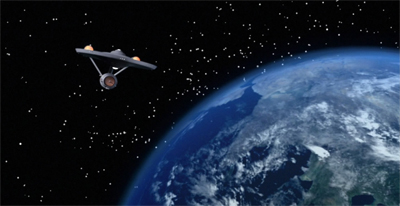
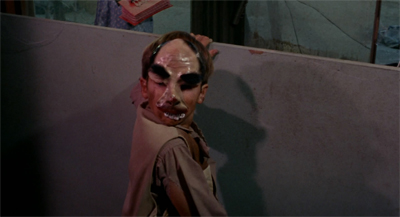
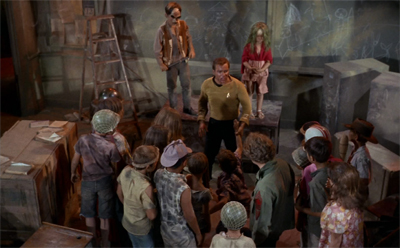

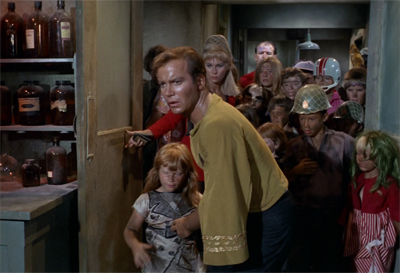
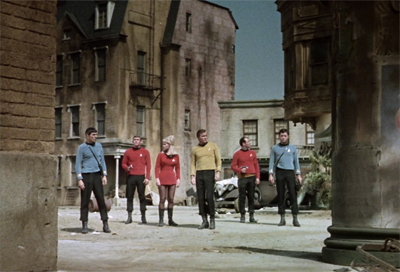
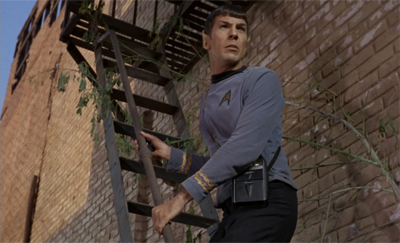
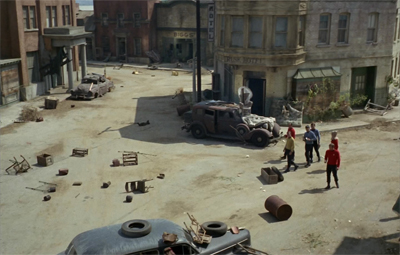

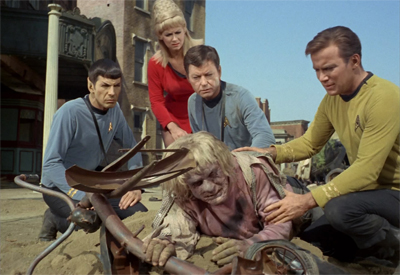


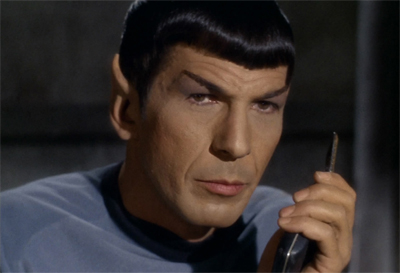
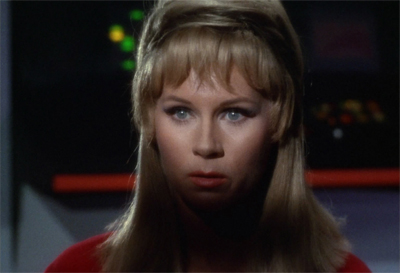

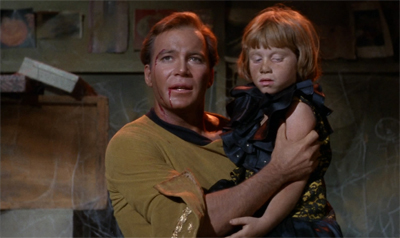
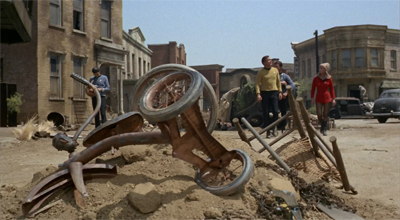
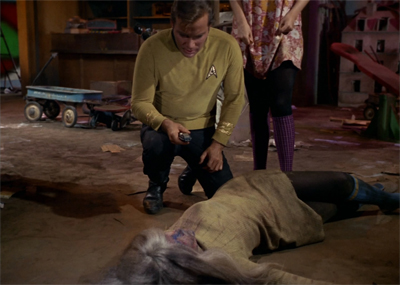





Leave a comment